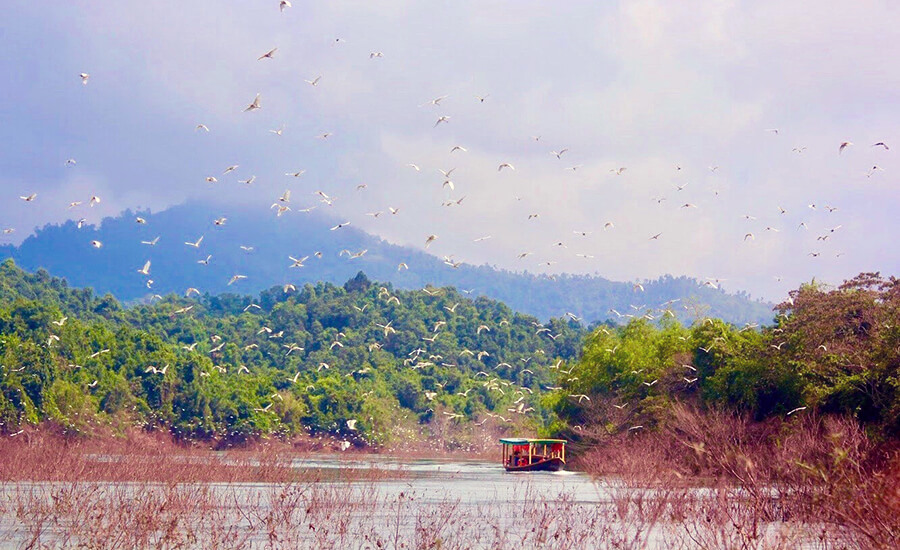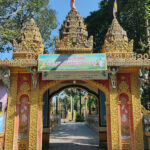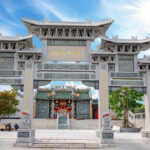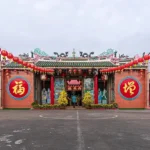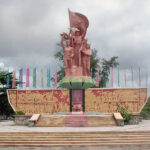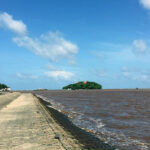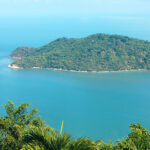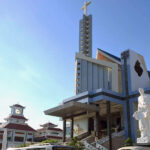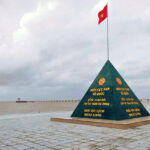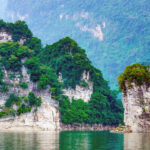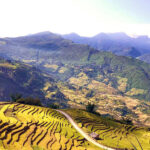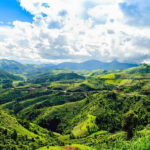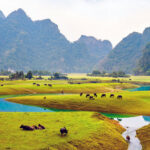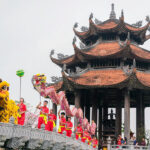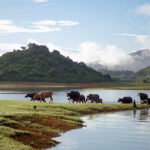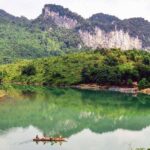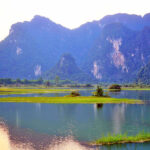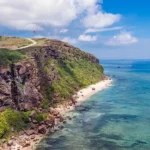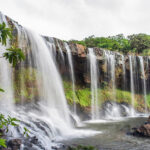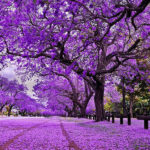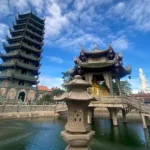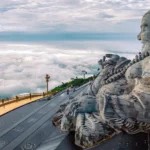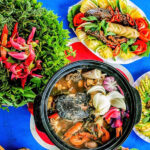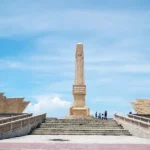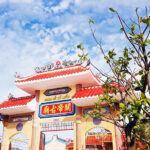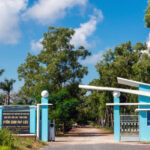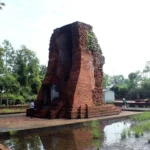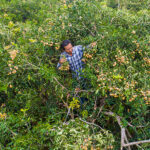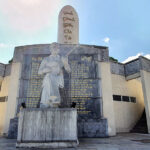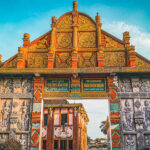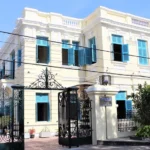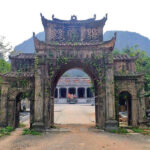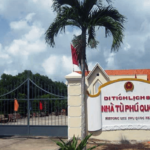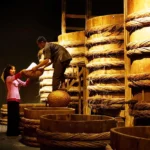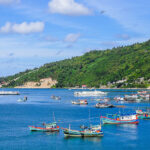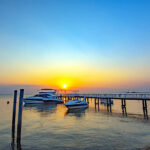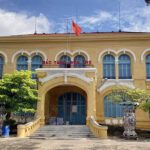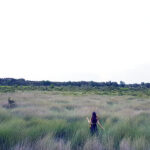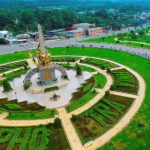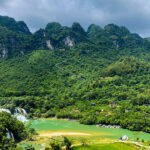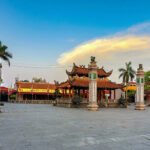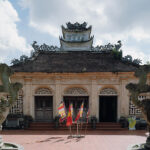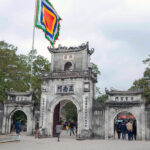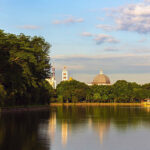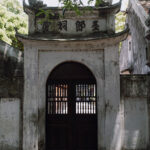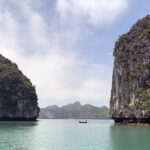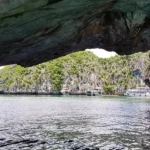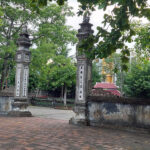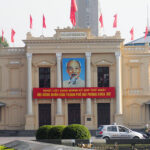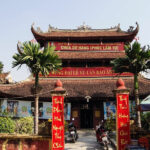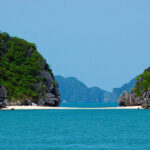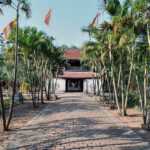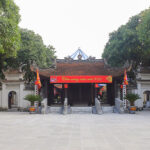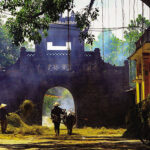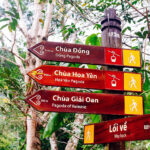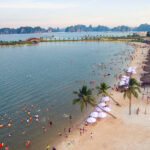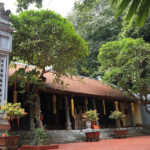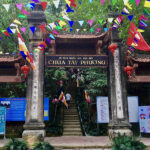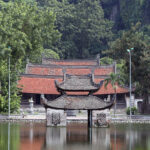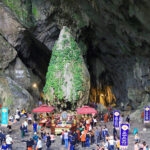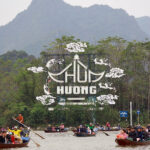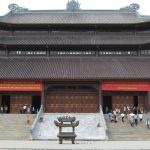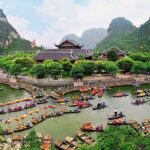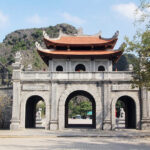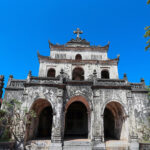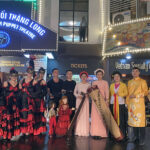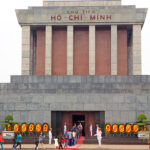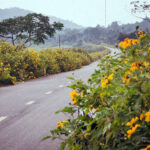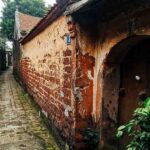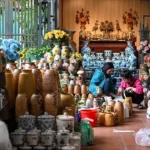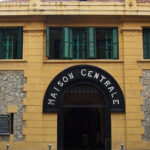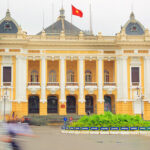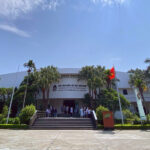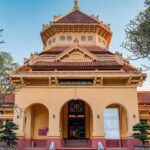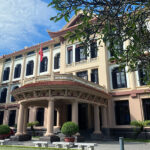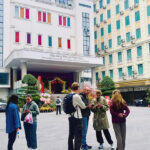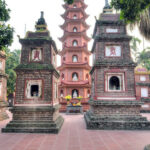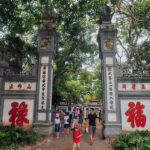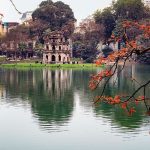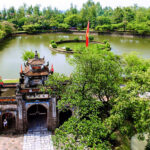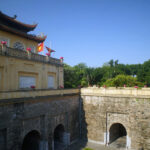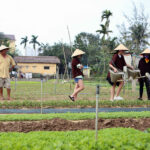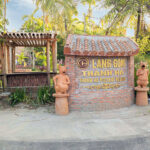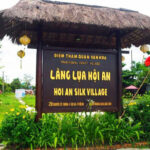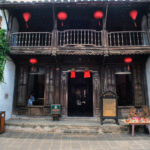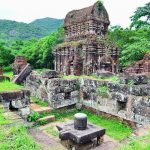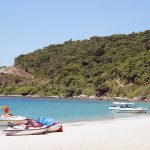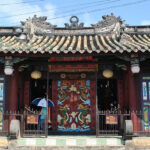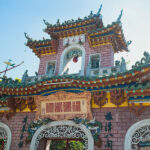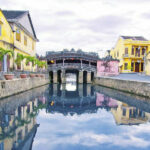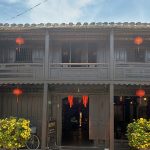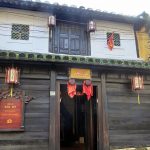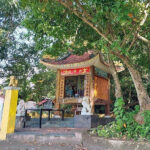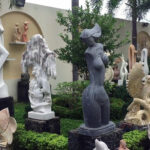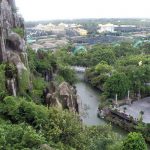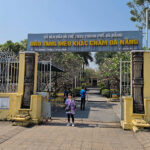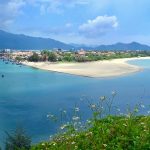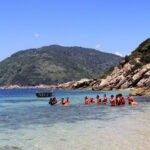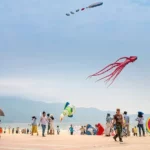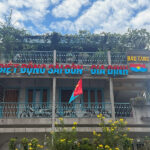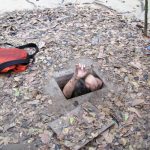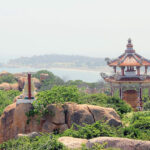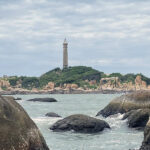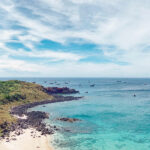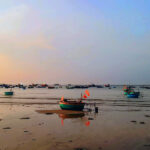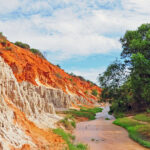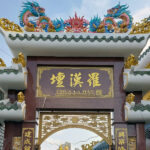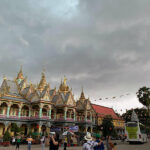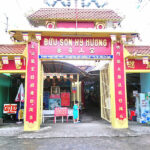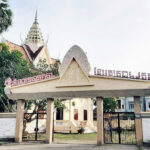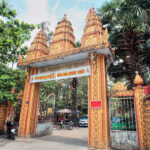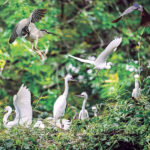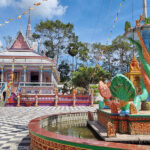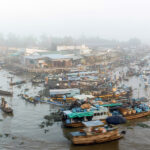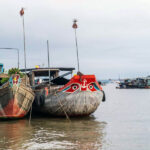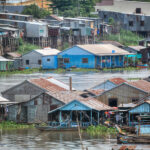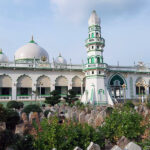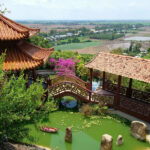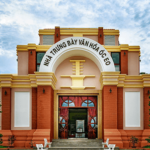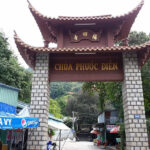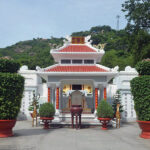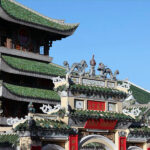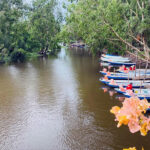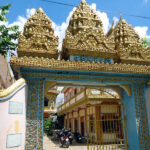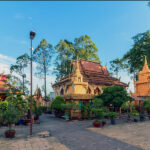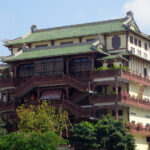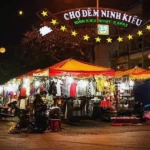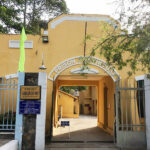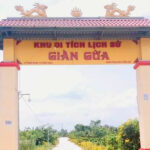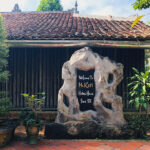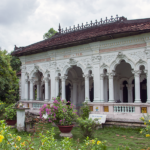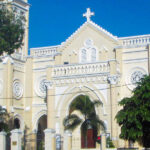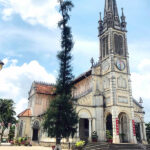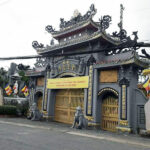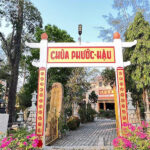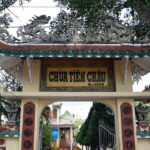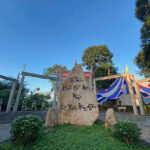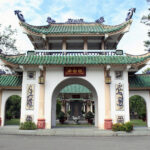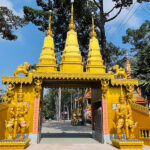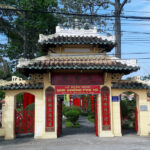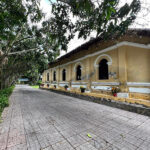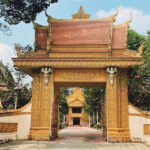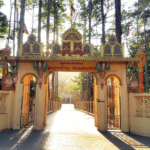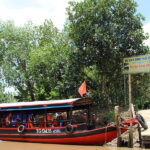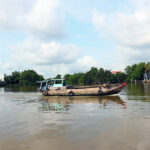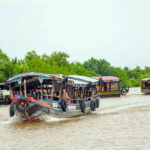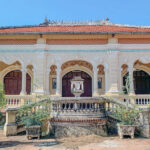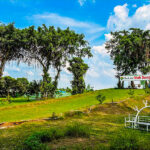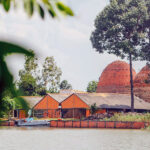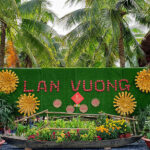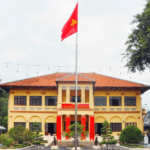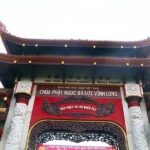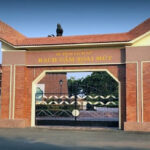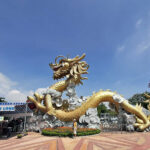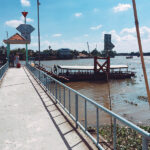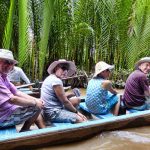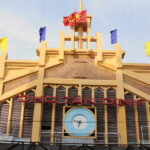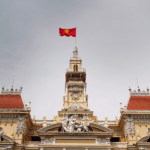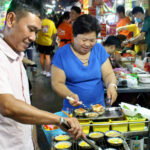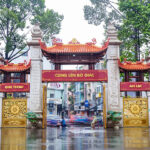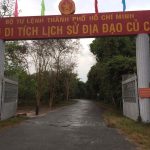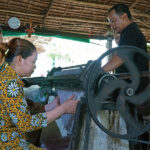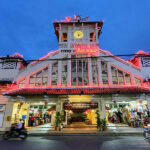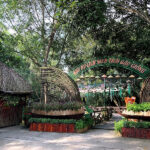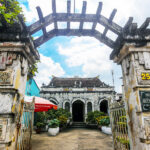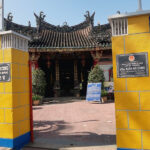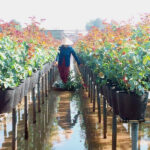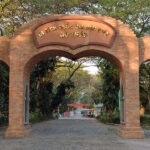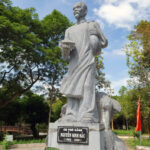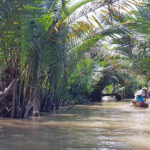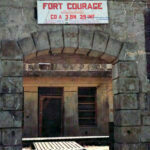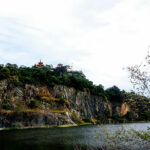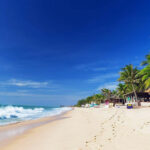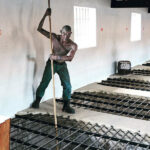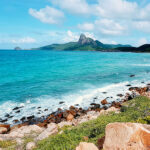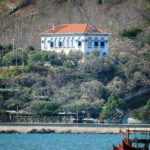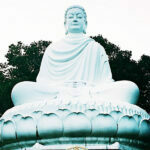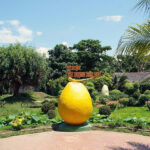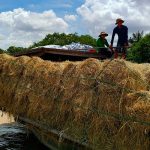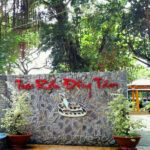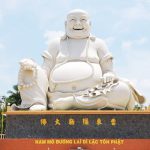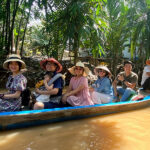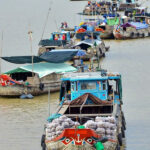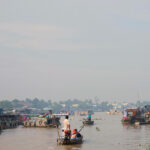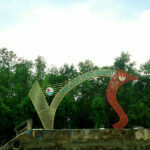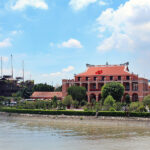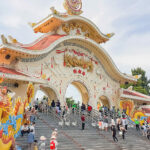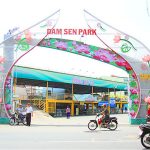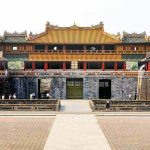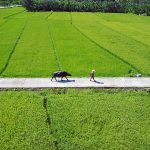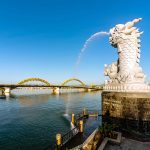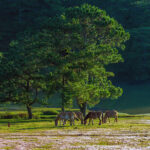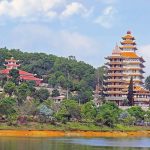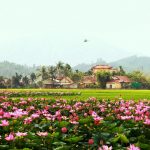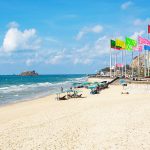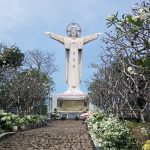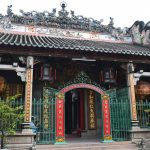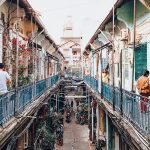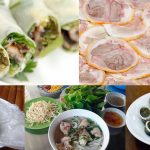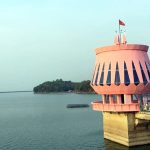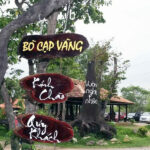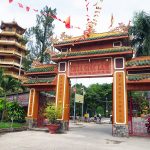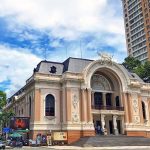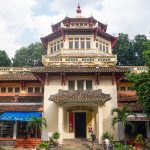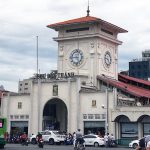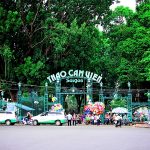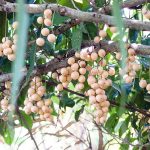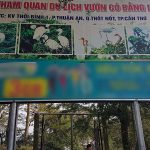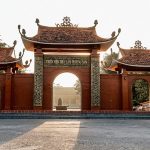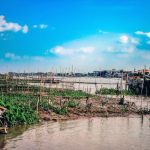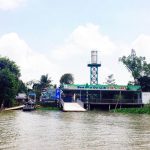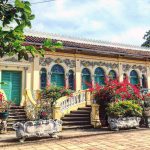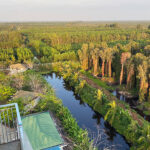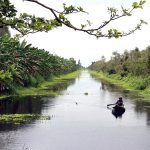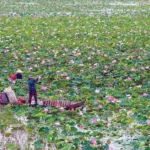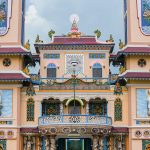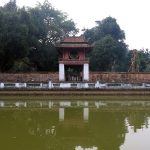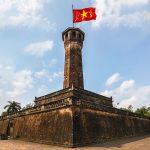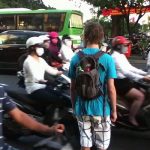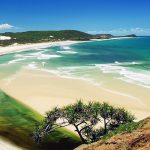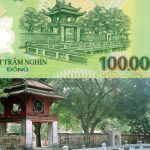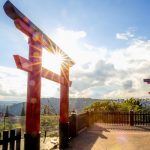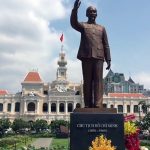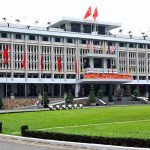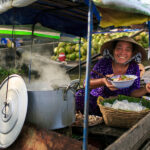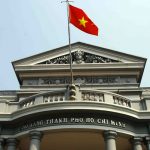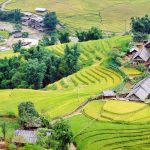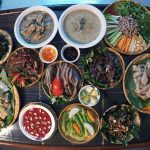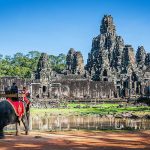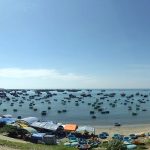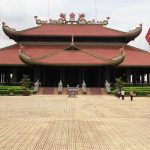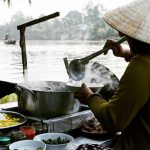Ha Tinh, a coastal province in central Vietnam, is an attractive tourist destination with a blend of pristine nature, rich historical heritage and Central culture.
Table of Contents
General information about Ha Tinh
Ha Tinh is located in the North Central region, bordering Nghe An to the north, Quang Tri to the south, the sea to the east and the two provinces of Borikhamxay and Khammouan of Laos to the west. Ha Tinh has a diverse terrain thanks to its position adjacent to the sea and the Truong Son mountain range.
What’s the best time to visit Ha Tinh?
Ha Tinh is located in a hot and humid tropical monsoon region, influenced by the transitional climate between the North and the South. The average annual temperature is about 24 to 25 degrees Celsius. April to July is the time when the temperature in Ha Tinh is highest, it can reach 43 degrees Celsius. Winter is from December to February, the lowest temperature is about 9-10 degrees Celsius, in mountainous areas 5 degrees Celsius.
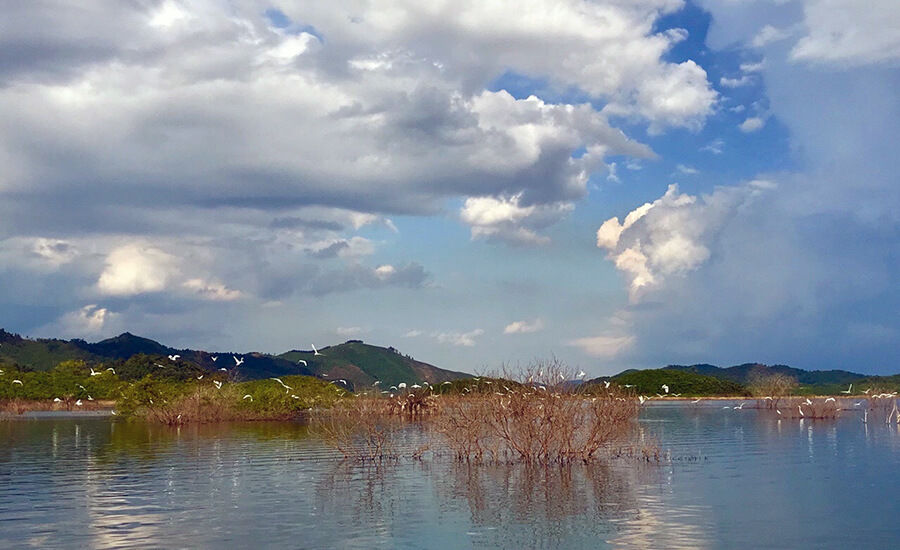
Vu Quang national park (photo source: collected).
The three months with the most rain in Ha Tinh are from August to October. The flood season coincides with the rainy season. Floods can appear early from May and end late in December. The months with the most floods are September and October, with 2-4 floods each year.
How to get here?
By air
Ha Tinh does not have an airport, if you want to travel by air, visitors should land at the nearest airport, Vinh (Nghe An), then go by road. The distance from Vinh airport to Ha Tinh center is 50 km. Bus tickets range from 120,000 to 150,000 VND.
Roadway
Ha Tinh is located on National Highway 1A, so it is easy to travel. The distance from Hanoi to Ha Tinh is 350 km. Currently, there are many expressways, so the travel time to Ha Tinh has been shortened to only about 5 hours. The distance from Ho Chi Minh City to Ha Tinh is 1,330 km, the travel time is about 20 hours.
In addition to personal vehicles, visitors can choose sleeper buses or limousines with ticket prices ranging from 200,000 VND to 1 million VND one way, depending on the bus company, time and distance.
Railroad
The Thong Nhat train stops at Huong Pho station, Huong Khe commune, about 50 km from the center of Ha Tinh center. The fastest train is SE1-2. Train ticket prices range from 300,000 VND to 1.3 million VND one way, depending on the compartment, train type and departure point.
Accommodation in Ha Tinh
Some tourist areas in Ha Tinh are Xuan Thanh beach, Thien Cam beach, Ha Tinh center or Ky Anh area. Large hotels include Melia Vinpearl, Muong Thanh, Quynh Vien Resort, Seabird Hotel, Xuan Thanh Sunny House, Eagle Hotel, Binh Minh Hotel, Lamer Thien Cam. Room rates range from 500,000 VND to 2 million VND per night.
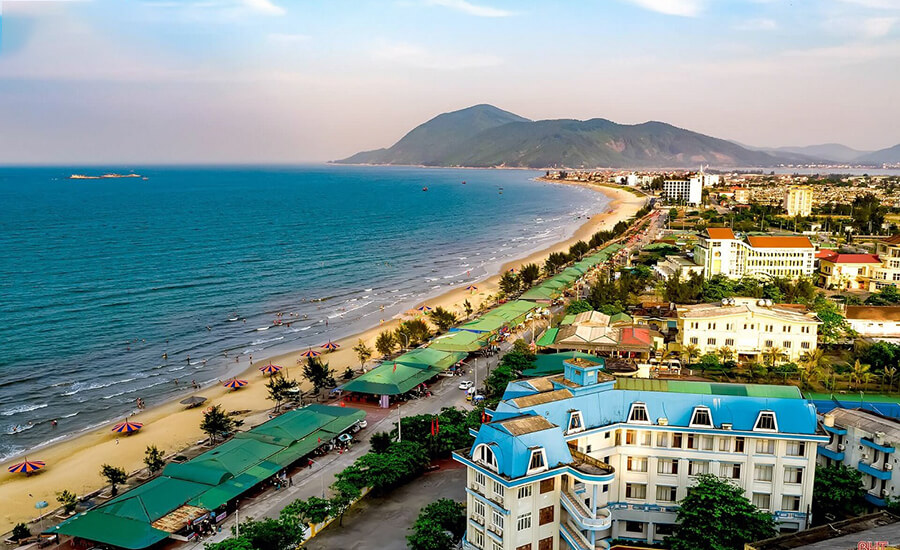
Small motels and hotels, depending on the area, cost around 150,000 VND to 300,000 VND per night.
Tourist attractions in Ha Tinh
Memorial sites
Nguyen Du Memorial Site
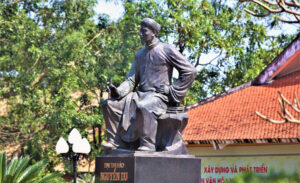 Nguyen Du (1765-1820) is a great poet and cultural celebrity of Vietnam. The temple dedicated him was built in 1825 in his native land of Tien Dien commune.
Nguyen Du (1765-1820) is a great poet and cultural celebrity of Vietnam. The temple dedicated him was built in 1825 in his native land of Tien Dien commune.
The vestiges associated with Nguyen Du and the Nguyen clan scatter on an area of 20 ha in Tien Dien village, stretching from the bank of the Lam River to the border with Dong Cung region. The Nguyen Du memorial site is about two hectares in area.
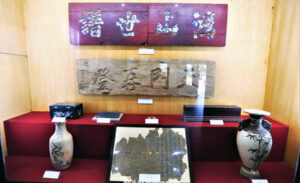 From the main entrance, we can see the guesthouse, village literati temple N2 and N1, memorial site to Nguyen Quynh. Temple dedicated to Nguyen Du, and exhibition room. The room displays some valuable objects such as the ink-slabs, plates made of shell Nguyen Du received as gifts during his ambassadorial trip to China, a compass he used for hunting, a wine bottle and cups, and the container of the royal diplomas conferred on Nguyen Nghiem.
From the main entrance, we can see the guesthouse, village literati temple N2 and N1, memorial site to Nguyen Quynh. Temple dedicated to Nguyen Du, and exhibition room. The room displays some valuable objects such as the ink-slabs, plates made of shell Nguyen Du received as gifts during his ambassadorial trip to China, a compass he used for hunting, a wine bottle and cups, and the container of the royal diplomas conferred on Nguyen Nghiem.
Nguyen Du’s burial site is located in Dong Cung, consisting of an altar, the tomb, and a garden. The altar has a stone stele and a statue in the shape of a table. The stele is carved with 19th century designs.
Visiting the site, especially Nguyen Du’s tomb, tourist have the chance to share the suffering the human life with the immense soul of a great poet of the Vietnamese.
Dong Loc Road Junction
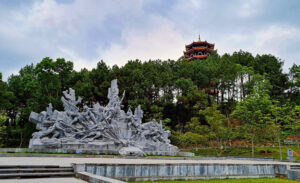 The intersection of provincial roads 5 and 15 used to be the main junction of the supply line during the war against the United States. American aircrafts heavily bombarded the area in repeated efforts to destroy the junction. The 20km section of road underwent 2.057 air bombardments.
The intersection of provincial roads 5 and 15 used to be the main junction of the supply line during the war against the United States. American aircrafts heavily bombarded the area in repeated efforts to destroy the junction. The 20km section of road underwent 2.057 air bombardments.
A unit of ten young female volunteers aged 17 to 24, led by Vo Thi Tan was assigned to keep the road open to traffic. Despite repeated bombardments, they stayed at their post, using only shovels and hoes to level bom craters.
They were all tragically killed during an air attack on 24 July 1968. A monument engraved with the names of the ten heroines was erected on a hill at the Dong Loc Road Junction.
Nature and wildlife areas
Vu Quang National Park
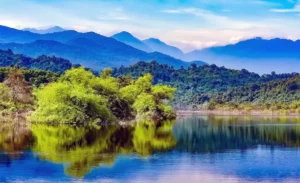 The park is located in Vu Quang town, bordering Vietnam – Laos, with a total area of over 55,000 hectares. This is home to thousands of species of flora and fauna, including species on the rare list. Inside the garden is the Ngan Truoi irrigation dam, which plays an important role in the daily life and production of the people in the area in particular and Ha Tinh province in general. F
The park is located in Vu Quang town, bordering Vietnam – Laos, with a total area of over 55,000 hectares. This is home to thousands of species of flora and fauna, including species on the rare list. Inside the garden is the Ngan Truoi irrigation dam, which plays an important role in the daily life and production of the people in the area in particular and Ha Tinh province in general. F
or tourists, this is a nature-friendly destination, where you can visit the lake and many activities such as waterfall bathing, boating, camping.
Hong Linh Mountain – La River
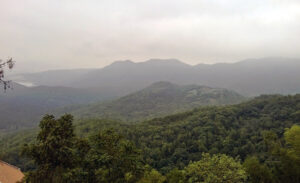 These are two places considered symbols of Ha Tinh. La River is a tributary of Lam River (Nghe An), 12.5 km long, flowing through Duc Tho district. La River is the confluence of Ngan Pho River and Ngan Sau River at Tam Soa wharf.
These are two places considered symbols of Ha Tinh. La River is a tributary of Lam River (Nghe An), 12.5 km long, flowing through Duc Tho district. La River is the confluence of Ngan Pho River and Ngan Sau River at Tam Soa wharf.
Approximately 100 pagodas, temples and shrines including Huong Tich Pagoda and Chan Tien Pagoda, are scattered throughout the 99 peaks of the Hong Linh Mountains. The mountain also has the wild natural scenery help you have more experiences and discoveries.
Thien Cam Beach and Mountain
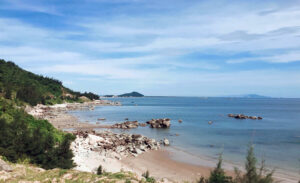 Thien Cam beach is located in Cam Xuyen commune, about 20 km from the city center, convenient access. Thien Cam Beach has long been famous for its beautiful pristine landscape and a 10-km long white-sand beach. The sea is almost always calm all year round and this is good for swimming and relaxation. It is a good idea to lie on Thien Cam beach to listen to the natural music created by breezes and waves hitting rocks and mountains like celestial instruments, which is translated as Thien Cam in the Vietnamese language.
Thien Cam beach is located in Cam Xuyen commune, about 20 km from the city center, convenient access. Thien Cam Beach has long been famous for its beautiful pristine landscape and a 10-km long white-sand beach. The sea is almost always calm all year round and this is good for swimming and relaxation. It is a good idea to lie on Thien Cam beach to listen to the natural music created by breezes and waves hitting rocks and mountains like celestial instruments, which is translated as Thien Cam in the Vietnamese language.
The low mountains near the sea have created a beautiful landscape. Coming to Thien Cam beach, visitors can visit several surrounding interesting places. Separated from the mountain by a sandbank, Yen Lac Pagoda, built during the 13rd century. It boasts antiques, including a bronze bell. Buddhist statues and a famous set of paintings called “The King of Hell’s Ten Palaces”. The pagoda with a 600 year old Bohdi tree and surrounded by the sea on three sides, receives thousands of visitors and pilgrims each year.

Visitors can also walk in pine forests and have picnics in Thien Cam Mountain and Ho Quy Ly Cave or tour of the Nhuong Ban 500 year-old fishing village. Villagers love performing traditional songs and dances, reflecting their daily life and tales of conquering the sea’s fierceness.
Not far from the beach are En and Boc islands where delicious seafood and clean beaches are available. If tourist are not satisfied with Thien Cam, they can take a boat for a cruise of half an hour to Boc Island to view of imposing rocks over-looking the sea.
 Behind these rocks is a clean beach ideal for swimming in the rippling ò the water surface and under the sunshine. Sitting in huts on the island to have boiled fresh seafood in the late afternoon is a common habit for most visitors. Not far from the island is Tien Beach at the foot of Tuong Mount with stone caves where both currents of salty and fresh waters meet.
Behind these rocks is a clean beach ideal for swimming in the rippling ò the water surface and under the sunshine. Sitting in huts on the island to have boiled fresh seafood in the late afternoon is a common habit for most visitors. Not far from the island is Tien Beach at the foot of Tuong Mount with stone caves where both currents of salty and fresh waters meet.
The French built Thien Cam to be a resort but the wars nearly destroyed all the infrastructure. Thien Cam was initially designed as a tourism resort in 1991, covering 249 ha. Many hotels and guest houses have been built since then. Nowadays, Thien Cam Beach has become a tourist site where many like to spend their vacations.
Xuan Thanh Beach
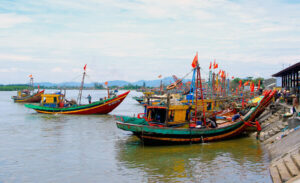 Xuan Thanh belongs to tien Dien commune, bordering Nghe An, is a rather deserted beach, not as crowded as Thien Cam. Along the beach is the My Duong River flowing from Hong Linh mountain, regulating the climate and adding to the peaceful beauty.
Xuan Thanh belongs to tien Dien commune, bordering Nghe An, is a rather deserted beach, not as crowded as Thien Cam. Along the beach is the My Duong River flowing from Hong Linh mountain, regulating the climate and adding to the peaceful beauty.
Next to Xuan Thanh beach is the Muong Thanh Xuan Thanh golf course and local seafood restaurants with affordable prices. By the end of 2023, there will be about 600 hotel rooms, 12 food service establishments, serving more than 4,000 guests at the same time.
Ke Go Lake
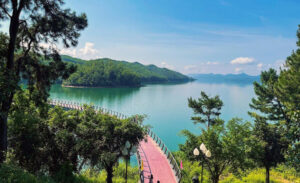 Ke Go Lake is the largest artificial freshwater lake in Ha Tinh, part of the Ke Go nature reserve located in the 3 districts of Cam Xuyen, Ky Anh and Huong Khe. The lake was built in 1976 and completed after 3 years, planned and designed by the French. On the lake is a C-shaped bridge connecting to the temple of General Secretary Le Duan. The road to Ke Go Lake is quite deserted, there is a section of land that is quite slippery if it rains, visitors should be careful when moving. The lake is an attractive tourist site where people can go swimming, fishing, hiking or hunting.
Ke Go Lake is the largest artificial freshwater lake in Ha Tinh, part of the Ke Go nature reserve located in the 3 districts of Cam Xuyen, Ky Anh and Huong Khe. The lake was built in 1976 and completed after 3 years, planned and designed by the French. On the lake is a C-shaped bridge connecting to the temple of General Secretary Le Duan. The road to Ke Go Lake is quite deserted, there is a section of land that is quite slippery if it rains, visitors should be careful when moving. The lake is an attractive tourist site where people can go swimming, fishing, hiking or hunting.
Ke Go lake is also an abundant source of food for neighbouring areas. The fish and shrimps from the lake are very tasty and can reach impressive size.
Scared pagodas and temples
Huong Tich Pagoda
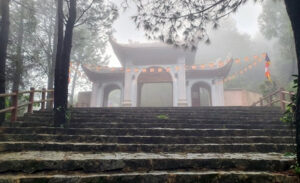 Huong Tich Pagoda is located at the top of Huong Tich Mountain, in the Hong Linh mountain range in Can Loc commune, Ha Tinh province, at an altitude of 650m above sea level. The pagoda was built around the 13th century. The main ceremony of the pagoda takes place on the 18th day of the second lunar month, where Quan Am Bodhisattva is worshiped.
Huong Tich Pagoda is located at the top of Huong Tich Mountain, in the Hong Linh mountain range in Can Loc commune, Ha Tinh province, at an altitude of 650m above sea level. The pagoda was built around the 13th century. The main ceremony of the pagoda takes place on the 18th day of the second lunar month, where Quan Am Bodhisattva is worshiped.
The pagoda is surrounded by majestic mountains and forests. One of the most typical architectural works in the architectural complex of Huong Tich Pagoda is Tam Bao Palace, where many Buddha statues dating from hundreds of years to thousands of years old.
To reach the pagoda, visitors choose the trekking route through pine forests, bamboo forests, walking while admiring the scenery, listening to the sound of flowing streams or using the cable car. Ticket price: 35,000 VND per person per way. Round-trip cable car ticket price: 180,000 VND per adult and 120,000 VND per child.
Thien Tuong Pagoda
Thien Tuong Pagoda was founded and built around the 14th century during the Tran Dynasty, nearly 700 years ago (recognized as a national scenic relic in 2004). The pagoda is revered as the ancestral temple of Buddhism in the Central region, because it was here that a Chinese Zen master named Chuyet Cong and his disciples came to Vietnam to spread the religion.
 When they passed by, they saw the peaceful scenery of the pagoda and stopped to practice for a while, then continued to the North to establish the Lam Te Zen sect in the North. Currently, the pagoda still preserves the writings of many eminent monks who practiced here. In addition, the pagoda also has the Dai Hong bell and many Buddha statues of high artistic value…
When they passed by, they saw the peaceful scenery of the pagoda and stopped to practice for a while, then continued to the North to establish the Lam Te Zen sect in the North. Currently, the pagoda still preserves the writings of many eminent monks who practiced here. In addition, the pagoda also has the Dai Hong bell and many Buddha statues of high artistic value…
The pagoda’s campus is about 150,000 m², bordered by two large streams (North stream and South stream), both originating from the top of Thien Tuong. The path to the pagoda is elaborately paved with stones in steps like stone stairs.
From the Pagoda, looking down at Hong Linh town and the intersection of Lam River and La River is as beautiful as a picture of the sacred mountains and rivers of Nghe An. Thien Tuong is not only beautiful in natural scenery but also associated with many spiritual legends about a sacred land in Hong Linh Mountain.
Dai Hung Pagoda and Kinh Duong Vuong temple
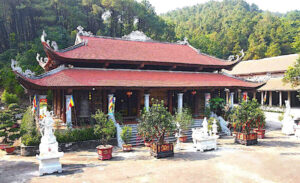 Dai Hung Pagoda and Kinh Duong Vuong temple belong to Dai Hung Historical – Cultural Relic Area. Dai Hung Pagoda According to old history, Dai Hung is one of four ancient temples including: Thien Tuong, Long Dam, Dai Hung, Cuc Lac, built around the 14th century, Tran Dynasty; with geographical distances evenly distributed, when the bell of one temple rings, it will resonate to the other temple and vice versa. The temple is built on the roof of a mountain at an altitude of about 100m above sea level. The antiques preserved here also include a bell over 1m high, weighing about 200kg, and was cast in 1799.
Dai Hung Pagoda and Kinh Duong Vuong temple belong to Dai Hung Historical – Cultural Relic Area. Dai Hung Pagoda According to old history, Dai Hung is one of four ancient temples including: Thien Tuong, Long Dam, Dai Hung, Cuc Lac, built around the 14th century, Tran Dynasty; with geographical distances evenly distributed, when the bell of one temple rings, it will resonate to the other temple and vice versa. The temple is built on the roof of a mountain at an altitude of about 100m above sea level. The antiques preserved here also include a bell over 1m high, weighing about 200kg, and was cast in 1799.
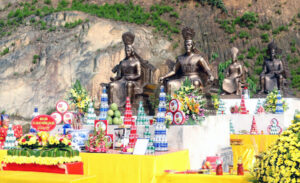 Legend has it that from the early days of the founding of the Vietnamese nation, when it was necessary to find a land to establish the capital, the ancestor Kinh Duong Vuong turned to the scenic area of Hong Mountain, built the Imperial Citadel here and named the country Xich Quy (meaning “Red Star”). Later, Kinh Duong Vuong moved the capital to the Ao Viet mountain area (Viet Tri – Phu Tho today). From the above legend, the people here established the Temple of Kinh Duong Vuong and the Hung Kings. The temple was built in the same period as Dai Hung Pagoda, about 1km apart, where the trees are naturally green, and there is a source of cool water flowing from the rock sources, creating a cool well. Every year, at Dai Hung relic site, many festivals are held, but there are two main festivals: the death anniversary of Kinh Duong Vuong on January 18 and the provincial-level Hung King’s death anniversary on the 10th of the third lunar month.
Legend has it that from the early days of the founding of the Vietnamese nation, when it was necessary to find a land to establish the capital, the ancestor Kinh Duong Vuong turned to the scenic area of Hong Mountain, built the Imperial Citadel here and named the country Xich Quy (meaning “Red Star”). Later, Kinh Duong Vuong moved the capital to the Ao Viet mountain area (Viet Tri – Phu Tho today). From the above legend, the people here established the Temple of Kinh Duong Vuong and the Hung Kings. The temple was built in the same period as Dai Hung Pagoda, about 1km apart, where the trees are naturally green, and there is a source of cool water flowing from the rock sources, creating a cool well. Every year, at Dai Hung relic site, many festivals are held, but there are two main festivals: the death anniversary of Kinh Duong Vuong on January 18 and the provincial-level Hung King’s death anniversary on the 10th of the third lunar month.
Ha Tinh specialties
Sillaginidae fish salad
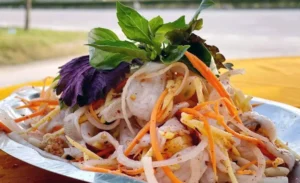 Sillaginidae, commonly known as the smelt-whitings, the shape is quite similar to freshwater goby but the meat is firmer and more fragrant, popular in the sea of Loc Ha. The fish is processed into many delicious dishes, the most prominent of which is fish salad. The fish is cleaned, then the meat is marinated with lemon juice to ripen naturally.
Sillaginidae, commonly known as the smelt-whitings, the shape is quite similar to freshwater goby but the meat is firmer and more fragrant, popular in the sea of Loc Ha. The fish is processed into many delicious dishes, the most prominent of which is fish salad. The fish is cleaned, then the meat is marinated with lemon juice to ripen naturally.
The dish has the natural sweetness of fish meat, served with herbs, raw vegetables such as Polyscias fruticosa leaves, sour star fruit leaves, thinly sliced green bananas. The dipping sauce is mixed according to a special recipe, from 15 different spices.
Huong Son Mountain Goat
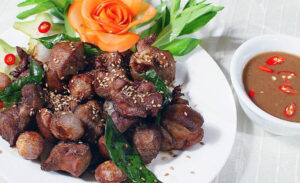 Dishes made from goat meat in Huong Son are usually made from goats under one year old. Goat meat is sold mainly in the morning and left whole.
Dishes made from goat meat in Huong Son are usually made from goats under one year old. Goat meat is sold mainly in the morning and left whole.
The local people process goats into many delicious dishes. The most unique is the whole roasted goat. The goat is cleaned of hair, then stuffed with cassava leaves and roasted over hot coals until cooked, when eaten the goat skin is crispy, fragrant with cassava leaves.
The most popular dish is rare goat, just cooked. Fresh goat meat, young goat, thick lean meat and skin are cut into pieces, dipped in boiling water, dipped in beer, steamed… or goat meat mixed with lemon juice, ginger, garlic, chili, pepper, shredded lemon leaves (sliced goat salad) served with fresh vermicelli, rolled in rice paper. Every dish is unique.
Jumping squid
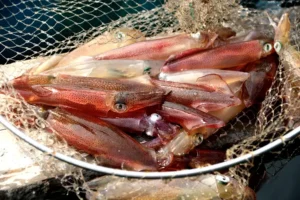 Jumping squid from Vung Ang is considered a specialty of Ha Tinh. The squid here are big and fresh, and after being caught, they are processed immediately to retain their sweetness. This type of squid can be made into many dishes such as salad, stir-fried, steamed.
Jumping squid from Vung Ang is considered a specialty of Ha Tinh. The squid here are big and fresh, and after being caught, they are processed immediately to retain their sweetness. This type of squid can be made into many dishes such as salad, stir-fried, steamed.
Each dish has its own flavor, the meat always retains a moderately delicious toughness. Depending on the season and harvest, the price of Vung Ang jumping squid ranges from 400,000 to 700,000 VND per kg.
Porridge soup
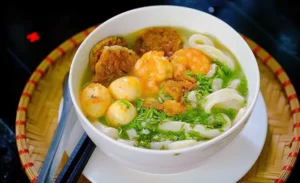 A popular dish in Nghe An – Ha Tinh region, just like then is called a combination of porridge and rice noodles. The “soul” of the dish is the broth from pork bones with spices, thick and fragrant. The broth must be cooked from early morning, the longer the bones are simmered, the sweeter the broth.
A popular dish in Nghe An – Ha Tinh region, just like then is called a combination of porridge and rice noodles. The “soul” of the dish is the broth from pork bones with spices, thick and fragrant. The broth must be cooked from early morning, the longer the bones are simmered, the sweeter the broth.
The broth must be as thick as porridge, the noodles are boiled for a few minutes and then taken out, not just dipped in boiling water like pho. The noodles are also served with a few slices of pork, sausage, boiled quail eggs, fish or shrimp.
Banh muot spring rolls
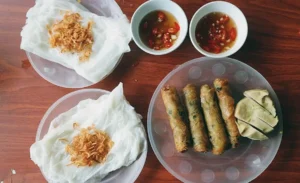 In Ha Tinh, tourists can easily come across many eateries with the sign “Ram – Banh muot”. “Ram” is similar to fried spring rolls, “banh muot” is another name for “steamed rice rolls”. The dish is attractive thanks to the contrasting combination of the soft, thin, fragrant rice-scented banh muot layer and the crispy, hot ram. In addition, diners often sprinkle a little fried onion to enhance the flavor.
In Ha Tinh, tourists can easily come across many eateries with the sign “Ram – Banh muot”. “Ram” is similar to fried spring rolls, “banh muot” is another name for “steamed rice rolls”. The dish is attractive thanks to the contrasting combination of the soft, thin, fragrant rice-scented banh muot layer and the crispy, hot ram. In addition, diners often sprinkle a little fried onion to enhance the flavor.
The dish can be eaten at any time of the day, dipped in garlic fish sauce. Each portion of banh muot spring rolls costs an average of 30,000 to 40,000 VND.
What to by as gifts?
Cu Do candy
Cu Do candy is a specialty of Ha Tinh, cooked from molasses, sugar, malt, ginger, peanuts as filling and sandwiched between two pieces of rice paper.
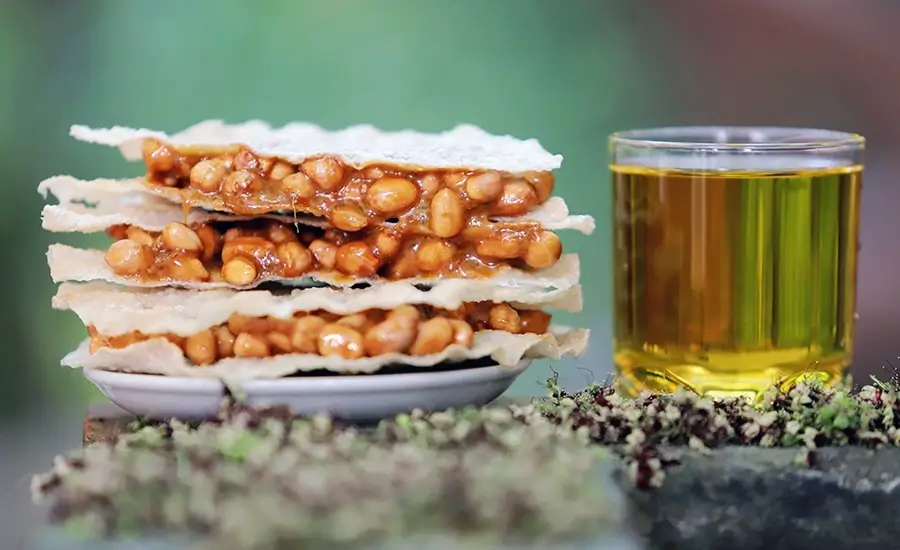
This candy is chewy and sticky, can be enjoyed with green tea. Cu Do candy is on the list of “top 100 Vietnamese gift specialties” in 2020-2021 of the Vietnam Record Organization.
Phuc Trach grapefruit
Phuc Trach grapefruit is a specialty of the people of the mountainous district of Huong Khe. Huong Trach commune, Huong Khe district is the “capital” of Phuc Trach grapefruit with 360 hectares. The grapefruit trees here produce about 50 fruits, some trees have more than 100 fruits. The harvest season is from August to the end of September every year. Phuc Trach grapefruit has a sweet and sour taste, aromatic smell, crispy and juicy segments. This fruit is consumed in many provinces and cities in the country.
Source: collected by An
Follow us for the best deal with Vietnam package tours and visa services!
